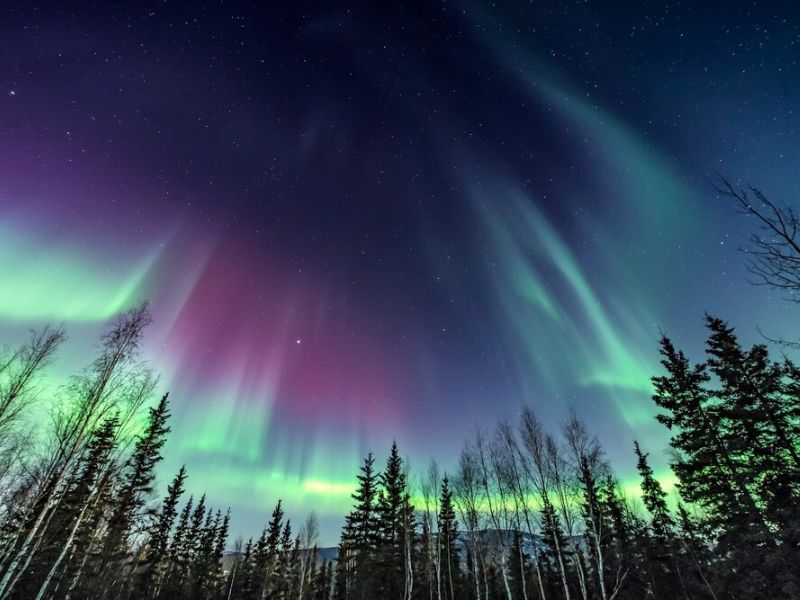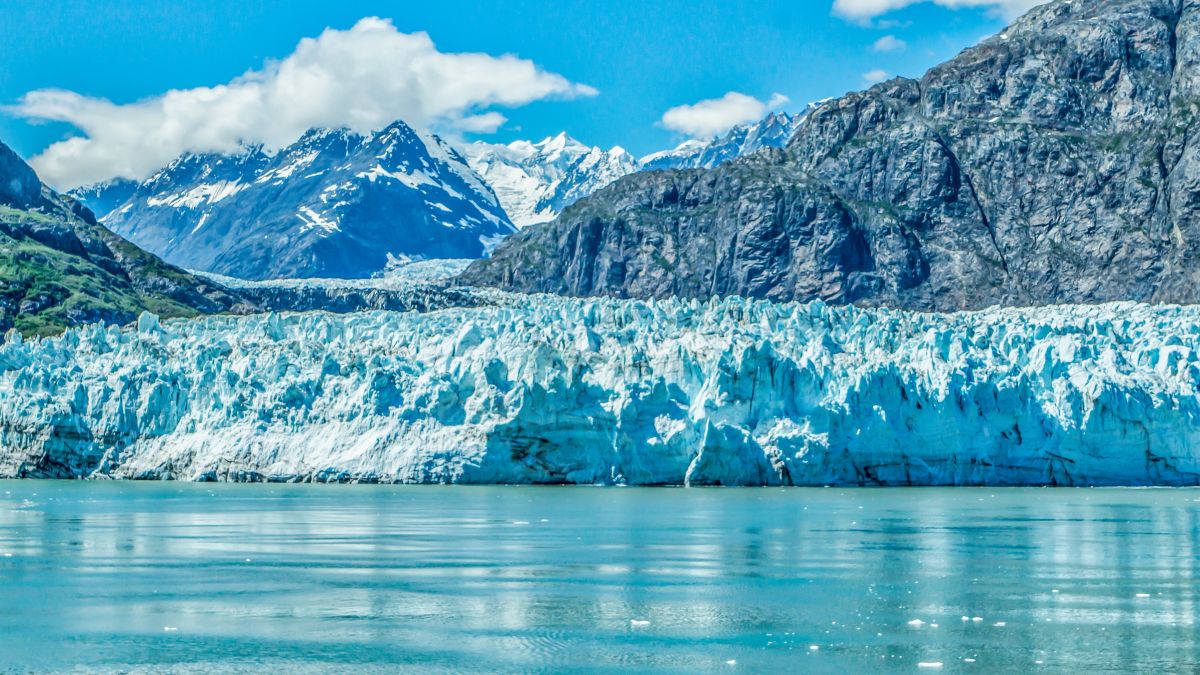Alaska is a beautiful state in the United States located at the farthest end of North America. The northern lights, bears, and salmon may all be seen in this wonderful location.
There is no fixed time to visit any natural visiting spot, but it is advised not to visit Alaska in the peak of winter due to its extreme weather conditions.
If you have an adventurous spirit, you will love visiting Alaska as it has more than 650,000 sq. miles of marine, inland, alpine, and untamed scenery.
When to visit Alaska? What is the best time or worst time to visit Alaska? These are some of the most frequently asked questions. In this article, we are going to explore everything about this.
So let’s start!
What Is The Best Time Of Year To Visit Alaska?
A trip to Alaska is a wonderful experience for you any time of the year. But the time considered the best is May to September.
On these days, the sun shines for longer, and the days are often warmer, or you can say have moderate temperatures. The summertime in Alaska offers a wide range of activities.
Summer is indeed the best time to visit Alaska for several reasons. Firstly, the weather during this season is relatively warm, with temperatures ranging from the mid-50s to the mid-60s Fahrenheit. That makes it comfortable to explore and participate in various outdoor activities.
The weather is ideal for hiking, biking, kayaking, or even enjoying a scenic drive to experience all that Alaska offers. Additionally, summer is one of the finest seasons to witness animals if you are interested.
Because of the lush greenery and the animals’ increased activity throughout the summer, wildlife is more visible and easier to spot. Moose, caribou, bears, and a wide range of bird species are just a few possible sightings.
The high-price season is also throughout the summer. Most business owners in the tourism sector only have 90 days to generate their entire year’s revenue.
So, if you consider visiting Alaska in the summer, you should have enough to meet your expenses at this magnificent place.
The visitor flow slows down between June and August, which can result in sporadic discounts and extra space.
Most people imagine Alaska as a desolate region covered in ice and snow, but if you visit at the proper time, you can take advantage of sparse crowds, pleasant weather, and breathtaking scenery.
What Is The Worst Time To Visit Alaska In 2023?
Winter might not be the best season to travel to Alaska if you don’t like the extreme temperature. During this time, there may be significant snowfall across most states, and temperatures may plunge below freezing.
In rural locations, this can make travel and outdoor activities challenging and even dangerous. Therefore, it’s advisable to avoid visiting Alaska in the winter if you want to avoid the cold.
During the winter, there are very few daylight hours, and you would not be able to enjoy this wonderful place’s beauty. So, if visiting this beautiful place during winter, one should have plenty of warm clothes.
In the winter, the temperature decreases significantly at night (October through March). Bring warm clothing and boots if you intend to be outside after dark during this season.
If your accommodations lack heaters or fireplaces, you might want to think about staying inside until sunrise.
Although temperature rarely drops below freezing in most regions. But still, it’s wise to err on the side of caution when clothing for winter weather in Alaska to avoid unpleasant experiences.
What Are Alaska’s Most Famous Species?
The majority of Alaska’s famous species are not typically visible in December. Nevertheless, large moose frequently congregate in urban areas; in Anchorage, they may be simpler to spot than in the summer.
Although indigenous forest birds like chickadees and redpolls can be seen in the bare branches, ravens appear to rule the sky.
Snowshoe hares have turned dazzling white, and it’s not unusual to spot the lynx, their arch-enemy, and amid freshly fallen snow.
A walk along animal footprints can turn any fresh dusting into a transparent journal of wildlife activity.
The Cheapest Time To Visit Alaska
Alaska travel is often the most affordable between May and September. These are the “shoulder seasons” of Alaska, which precede and follow the hot summer months. More and more visitors start to visit this marvelous place during these months.
Alaska’s driest month is typically May, when there is a 25% bit of rain on any one day, while September has a daily probability of rain that is twice as high.
In Alaska, weather patterns shift between the end of August and the middle of September, bringing clouds, frequent rainstorms, and cooler temperatures.
It is also the season when the trees and tundra change to vibrant, vivid hues. The bright yellow birches of the boreal forest and the deep red of the heathery tundra can make September the most beautiful time of year for a week or two (which week depends on your latitude).
Except in the Arctic, most tourist-oriented companies remain open and offer discounted prices through September 15. The following day is a potluck.
The season for silver salmon fishing on the Kenai Peninsula is still open through the end of the month, despite some places closing down completely.
A traveler who arrives in September will likely experience a month of fresh, bright, ideal weather with the state largely to itself. Or the entire month could be chilly and rainy.
What Is Alaska’s Busiest Month?
Alaska has unpredictable weather and extreme weather conditions, but its beauty always attracts true nature lovers.
Alaska is a place of extremes. Even though the state is renowned for its bitterly harsh winters, the summers may be quite moderate and, in some places, even hot.
Alaska always has something to do, regardless of the season. That is unquestionably accurate in terms of the busiest times of the year. The Last Frontier experiences its busiest months in May, June, and July.
The evenings are the fullest, and the weather is warm. In certain areas of the state, the sunshine never sets during the summer. At that time, Barrow experiences year-round sunshine, and Fairbanks hosts its Midnight Sun Marathon.
Most tourists arrive at this time to experience Alaska’s incredible natural beauty. This is so that they may enjoy the stunning scenery and wildlife.
An Overview Of Alaska’s Temperature
Are you interested in learning about the temperature in Alaska? Well, I’ve got some information for you.
Alaska is known for its cold and harsh winters, especially in its interior regions. The average temperature in January ranges from -5 to 10°F (-20 to -12°C) in most of the state.
However, if you’re looking for slightly milder weather, the coastal areas may be more up your alley. The Pacific Ocean has a moderating effect on these regions, and the average temperature in January is typically in the 20s and 30s°F (-6 to 4°C).
When summer rolls around, the temperature can get a bit warmer, with many parts of the state reaching the 60s and 70s°F (15 to 21°C). But keep in mind, even though the temperatures may be milder, there may be long periods of overcast and cloudy weather, especially along the coast.
So, as you can see, Alaska is a diverse place when it comes to temperature and weather. From the icy interior to the mild coastal areas, there’s a range of conditions to experience. Whether you’re a resident or just visiting, Alaska is sure to be a unique and challenging place to be.
Northern Lights Show In Alaska
The Northern Lights, also known as the Aurora Borealis, is a natural light display in the Northern Hemisphere. It is caused by the interaction of solar particles with the Earth’s magnetic field.

Alaska is one of the best places to see the Northern Lights due to its clear and dark skies. To catch a glimpse of the aurora, the winter months are the best time to visit, as the nights are longer and the skies are clearer during this period.
The Northern Lights appear as green, yellow, blue, pink, and violet curtains of light that move across the night sky. They can also appear as faint glow or bright, intense dancing lights.
Watching the Northern Lights is a truly magical experience and a must-see for anyone visiting Alaska.
Whether you view them from the comfort of a warm cabin or the open wilderness, the Northern Lights are sure to take your breath away.
Is Alaska Safe To Visit In 2023?
Alaska is considered a safe place to visit for tourists. The state has low crime rates and is known for its natural beauty and outdoor recreation opportunities.
That being said, visitors should still take standard precautions when traveling, such as being aware of their surroundings, taking care of personal belongings, and being aware of natural hazards such as wild animals and extreme weather conditions.
Additionally, visitors should be prepared for the unique challenges posed by the remote wilderness areas common in Alaska.
If you plan to visit Alaska in 2023, I recommend checking for any travel warnings or advisories issued by the government and staying informed about local conditions during your trip.
6 Precautions For Visiting Alaska
If you’re planning a trip to Alaska, it’s important to be prepared for the unique challenges and conditions of the state. Here are some precautions to take when visiting Alaska:
Weather
Alaska’s weather can be extreme and unpredictable, so it’s important to check the forecast and be prepared for cold, wet, and windy conditions.
Wildlife
Alaska is home to many wild animals, including bears, moose, and wolves. Be aware of your surroundings, carry bear spray, and follow local safety guidelines for wildlife encounters.
Outdoor Activities
Alaska is a popular outdoor destination for hiking, fishing, and camping. Make sure to properly prepare for these activities, including carrying adequate supplies, informing someone of your plans, and following local safety guidelines.
Road Conditions
Many roads in Alaska are unpaved, and winter conditions can make driving difficult. Check road conditions before driving carefully, especially on remote roads.
Accessibility
Alaska is a vast and sparsely populated state, and some areas may be remote and difficult to access. Make sure to plan and be prepared for limited access to medical care or communications services.
Cost of living
Alaska is known for its high cost of living, especially food and fuel. Plan your budget accordingly and be prepared for prices that may be higher than what you’re used to.
Conclusion
Alaska is a fantastic travel destination at any time of year. Its natural beauty, diverse experiences, and breathtaking scenery make it a special place for people of all interests. There’s always something to enjoy in Alaska, whether in summer or winter, and your experiences will be unforgettable.
